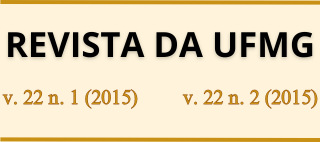Diversity in immunology
DOI:
https://doi.org/10.35699/2316-770X.2015.2749Keywords:
Immunology, Specificity, DegenerationAbstract
In the generation of immunological diversity, millions of different cells (such as lymphocytes), and molecules
(antibodies) are assembled by somatic processes, de novo in each vertebrate organism. The genes involved in the lymphocyte activation and antibody production are not inherited as whole genes. Lymphocytes and antibodies, different from one another, react with each other and form a complex multiconnected network – the immune system – in which complexity is essential. Reductions in (lymphocyte clonal) diversity (oligoclonal expansions) are associated with severe forms of infectious, allergic and autoimmune diseases. Current immunology is learning to deal with systemic approaches in which clonal diversity is important in the associations with the native microbiome and dietary proteins.
Downloads
References
AMARAL, J. F. and GOMES-SANTOS, A. C.. PAULA-SILVA, J.; NICOLI, J.R.; VIEIRA, L.Q.; FARIA, A.M.C.; MENEZES, J.S. "Antigenic dietary protein guides maturation of the host immune system promoting resistance to Leishmania major infection in C57BL/6 mice.”Immunology29 (3): 455-464, 2010.
EISEN, H. N., & CHAKRABORTY, A. K. (2010). Evolving concepts of specificity in immune reactions. Proc Natl Acad Sci U S A, 107(52), 2010, 22373-22380. doi:10.1073/pnas.1012051108
GILBERT, S. F., et al. (2012). A Symbiotic View of Life: We Have Never Been Individuals. Quarterly Review of Biology 87: 326-341, 2012.
GILBERT, S. F., BOSCH, T. C. LEDON-RETTIG, C. Eco-Evo-Devo: developmental symbiosis and developmental plasticity as evolutionary agents. Nat Rev Genet16(10): 611-622, 2015.
HAURY, M., SUNDBLAD, A., GRANDIEN, A., BARREAU, C., COUTINHO, A., & NOBREGA, A. The repertoire of serum IgM in normal mice is largely independent of external antigenic contact. Eur J Immunol, 27(6), 1557-1563, 1997.
LINDLEY , D. Uncertainty. Einstein, Heisenberg, Bohr, and the struggle for the soul of science. New York: Anchor Books, 2007. p.127
MATURANA, H. Prefácio. Guia Incompleto de Imunobiologia. Como se o organismo importasse. N. Vaz, N. and Faria, A.M.C. Belo Horizonte, COOPMED, 1993.
MATURANA, H., & Mpodozis, J. The origin of species by means of natural drift. Revista Chilena de Historia Natural 73:261-310 (2000), 73, 261-310, 2000.
MATURANA, H. Autopoiesis, structural coupling and cognition: a history of these and other notions in the biology of cognition. Cybernetics & Human Knowing, 9(3-4), 5-34, 2002.
MATURANA, H., & Poerksen, B. From Being to Doing: The Origins of Biology of Cognition. Heidelberg: Carl-Auer, 2004.
MENEZES, J. S., Andrade, M. C.,Senra, B.,Rodrigues, V. S.,Vaz, N. M. & Faria, A. M. (2006). Immunological activities are modulated by enteral administration of an elemental diet in mice. Clin Nutr25(4): 643-652, 2016.
MOCZEK, A. P., Sears, K. E., Stollewerk, A., Wittkopp, P. J., Diggle, P., Dworkin, I., Extavour, C. G. . The significance and scope of evolutionary developmental biology: a vision for the 21st century. Evol Dev, 17(3), 198-219. doi:10.1111/ede.12125, 2015
MPODOZIS, J. M. Posfácio- O modo de ouvir. In Editora-UFSC (Ed.), Vaz , N.M., Mpodozis, J.M., Botelho, J.F. and Ramos, G.C. Onde está o organismo? – Derivas e outras histórias na Biologia e na Imunologia. (pp. 195-202). Florianópolis SC Brasil: Editora UFSC, 2011.
NICHOLSON, D. J. The return of the organism as a fundamental Explanatory concept in Biology. Philosophy Compass9(5): 347-359, 2014.
VARELA, F. J., & ANSPACH, M. R. “The Body Thinks: The Immune System and the Process of Somatic Individuation.” (t. b. W. Whobrey, Trans.). In: H. U. Gumbrecht & K. L. Pfeiffer (Eds.), In Materialities of Communication (pp., 273– 285.). Stanford: Stanford: Stanford University Press, 1994.
VAZ, N. M., & Varela, F. G. Self and nonsense: an organism-centered approach to immunology. Med. Hypothesis, 4, 231-257. doi:http://dx.doi.org/10.1016/0306-9877(78)90005-1, 1978.
VAZ, N. M. The specificity of immunological observations. Constructivist Foundations, 6(3), 334-351, 2015.
VAZ, N. M., & CARVALHO, C. R. (2015). On the origin of immunopathology. J Theor Biol, 375, 61–70. doi:10.1016/j.jtbi.2014.06.006
WOOLDRIDGE, L., EKERUCHE-MAKINDE, J., VAN DEN BERG, H. A., SKOWERA, A., MILES, J. J., TAN, M. P., SEWELL, A. K. A single autoimmune T-cell receptor recognizes over a million different peptides. Journal of Biological Chemistry, 287(2), 1168-1177, 2012.
WUCHERPFENNIG, K. W., ALLEN, P. M., CELADA, F., COHEN, I. R., DE BOER, R. J., CHRISTOPHERGARCIA, K., SERCARZ, E. E. Polyspecificity of T cell and B cell receptor recognition. Semin Immunol, 19(4), 216-224, 2007.




